Earthbound is a very unique RPG. Most of its contemporaries took place in vaguely European fantasy realms, in which players took on the role of powerful warriors and wizards. Instead Earthbound was set in a fictional United States (Eagleland), through which the player guides a group of psychic children. Beyond just setting and characters, Earthbound also possess a unique quirky & cartoony visual style paired with a humorous and emotional tone.
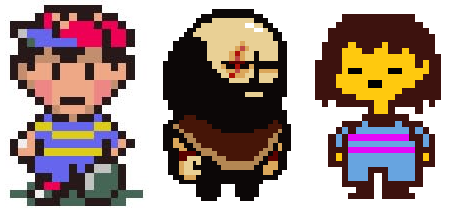
In Earthbound the player takes on the role of Ness, a young boy in Eagleland. One night he is woken up by a meteorite crash outside his home and goes to investigate. There he finds a talking bug from the future who tells him he will save the world. From here Ness travels his country and other parts of the world, meeting new friends, and going on adventures in his quest.
While many people worked on this game, the person most instrumental to its direction was Shigesato Itoi. Itoi was primarily known as a copywriter, creating slogans for advertisements. In the late 80s, he visited Nintendo and pitched a video game concept to them about an RPG taking place in modern times. They accepted the pitched and created the Famicom game Mother. With Mother Itoi wanted to create an emotional experience for all people, not just stereotypical gamers.
Mother did well in Japan, and nearly received a localization in the US. Although almost complete, we did not receive this version due to the release of the SNES. Eventually MOTHER received a sequel, MOTHER 2.

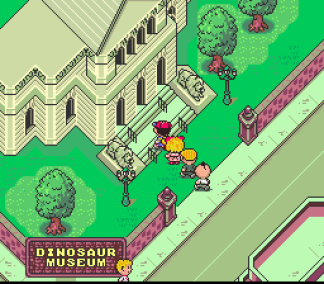
MOTHER 2 was also localized, re-titled Earthbound, and released in the west. Unfortunately, despite a heavy marking push, Earthbound under-performed commercially and was considered a failure by Nintendo.
Despite low sales Earthbound built a cult following in the west. Much of this fanbase assembled on Starmen.net. This website hosted various fanart and discussion. When it was announced that Mother 3 would not receive an official translation, this community stepped up and created one themselves. Knowledge of the series became more widespread after the inclusion of Ness in Super Smash Bros.
The influence of Earthbound extends beyond just its fan community, extending to game developers as well. In this article I want to highlight two western indie games with very strong connections to Earthbound. I want to compare and contrast them with Earthbound and each other to find what the lasting impact and influence Earthbound had on modern games.
[LISA: The Painful]
Lisa: The Painful was developed by Austin Jorgensen. It is a sequel to his earlier, Yume-Niki inspired game, Lisa. The post-apocalyptic world of Lisa: The Painful is one without women. That is until one day a former martial artist named Brad randomly comes across a baby girl. He and his friends take it upon themselves to raise her in secret. Years later word of her existence leaks out and she is kidnapped. Brad embarks on a journey to find those who took her and bring her back, by whatever means necessary.
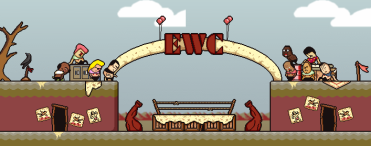

So yeah, the story and setting of Lisa are extremely dark. To balance this out most of the men you encounter are extremely goofy. One of the first ally’s Brad makes is Terry. He is the hint master and has put up many helpful signs throughout the world. Later, Brad and his crew will arrive at an entire town dedicated to professional wrestling. While the overarching story is very depressing, the many individual moments can be lighthearted and funny.
The world of LISA is dangerous and grueling. This is reflected in it’s gameplay by forcing the player to make tough choices. Early in the game you will be asked to sacrifice either a party member or one of Brad’s arms. Losing his arm has permanently change to his options in combat and ability to traverse the world. Having to lose a party member has obvious consequences. This is just one example, there are many throughout the game. To make matters worse, some of these decisions can happen randomly. You may be resting at a campfire when one of your allies gets kidnapped. At this point you must choose to either pay the ransom, or continue without them.
[Undertale]Undertale is another, much more popular, Earthbound influenced title. It was developed by Toby Fox, who had previously worked on a rom-hack of Earthbound. Players take on the role of a child who falls into the Underground, the realm of monsters. Their goal is to return to the surface world.
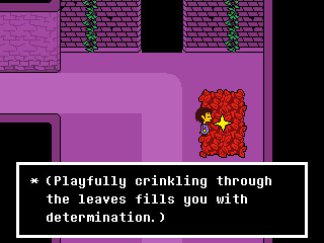
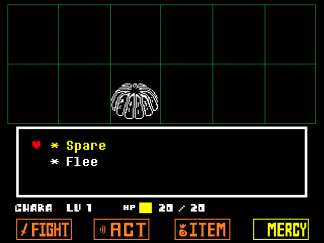
Along the way the player meets a variety of kooky characters. The most memorable for me was Papyrus, a skeleton who wants to catch a human so he can join the royal guard. All his text is written in the papyrus font, and you can go on a date with him. Anther favorite of mine is the annoying dog, who always shows up at weird times accompanied by a goofy song.
Undertale’s most notable aspect is the way it subverts typical RPG conventions. One way is its approach to battles. To dodge enemy attacks you must play a shooter-esque dodging game with your heart. On your turn you can choose to attack, or interact with the enemies. Through interactions you can end the conflict peacefully. Every enemy in the game can be handled in a non-violent way, allowing the player to pursue pacifist, neutral, or genocidal play throughs. Each path has different events, bosses, and endings.
[Conclusion]Cartoony visuals, quirky sense of humor, occasional surreal imagery, and forays into more emotional storytelling are the primary elements that tie each game together. Each game also features a primary author, a rare thing in the realm of video games. But these are largely surface elements or just details of development. I feel what really ties all three games together is the effort to use the JRPG formula to explore new settings and themes in video games. Earthbound took us to a familiar world and used it to tell a fantastic tale. LISA explores themes of abuse and it’s mental and physical scars. Undertale uses the tropes of video games in surprising ways to evoke a response. My hope is that these newer games will inspire the game developers of the future to continue using the medium in unique and surprising ways.
Advertisements Share this:




